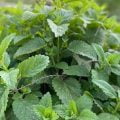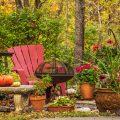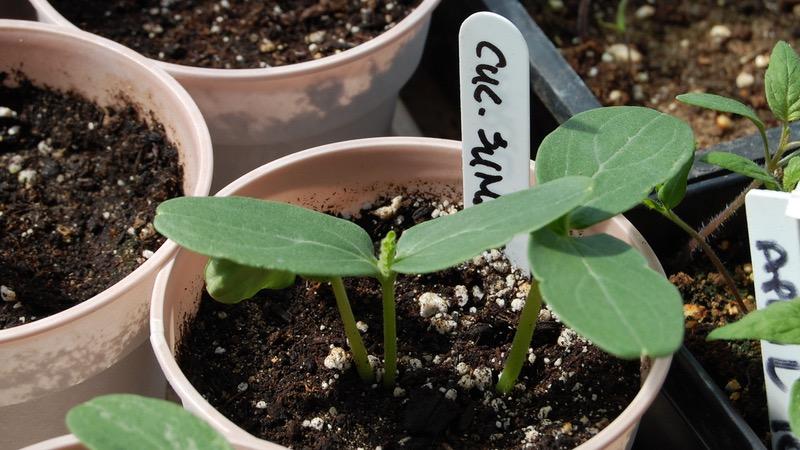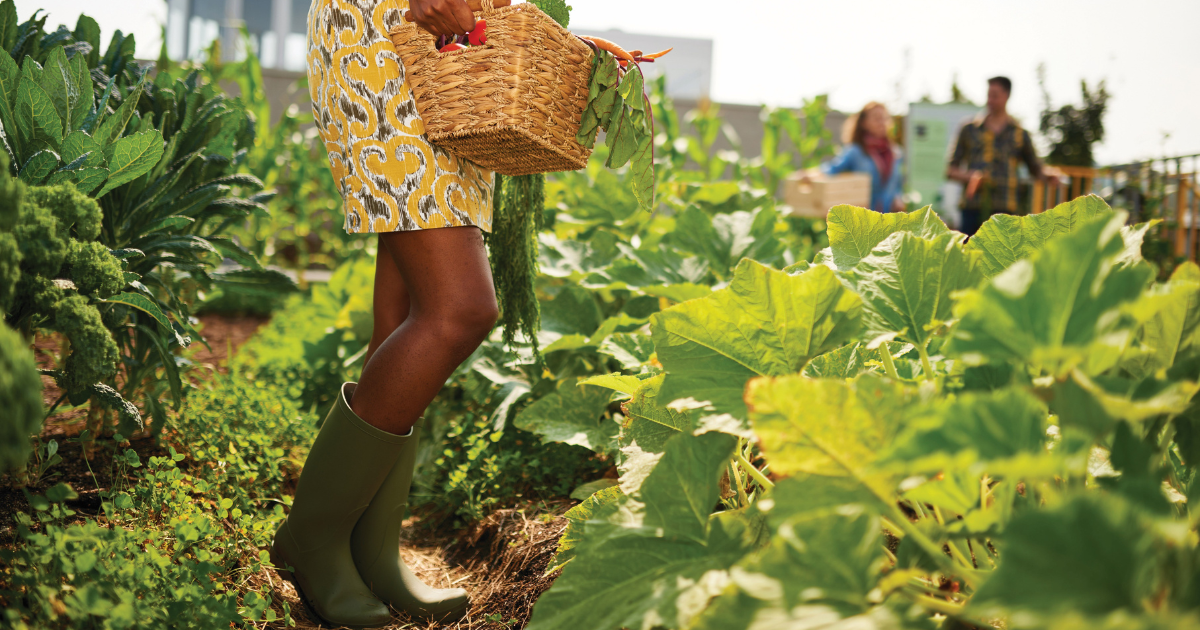Growing your own food is one of the most satisfying things you can do in a Canadian garden. It’s also a wonderful activity to share with children—what better way to teach your family where their favourite foods come from? Despite our reputation as the Great White North, wherever you live, there are fruits and vegetables that will flourish in your own backyard during growing season, as long as you have adequate sun. And you don’t need a vast amount of space to do it. From dwarf fruit trees to strawberries grown in containers, the choices are vast and delicious to explore. The key to a successful harvest is to choose crops best suited to your growing conditions. Here are some tips to guide you to a successful, fruitful season.
Soil prep
 First off, note that your success in growing any plants requires that you pay close attention to soil preparation. Make sure that your garden soil has been weed-free for a few months and that you add generous quantities of finished compost and about 10 percent of earthworm castings for the very best results. I recommend compost certified by the Composting Council of Canada: BIOMAX is the trade name of an excellent-quality compost that you can buy from retailers by the bag. The worm castings add natural minerals, microbes and nutrients in abundance. I add earthworm castings whenever I plant fruits and veggies—it makes a huge difference!
First off, note that your success in growing any plants requires that you pay close attention to soil preparation. Make sure that your garden soil has been weed-free for a few months and that you add generous quantities of finished compost and about 10 percent of earthworm castings for the very best results. I recommend compost certified by the Composting Council of Canada: BIOMAX is the trade name of an excellent-quality compost that you can buy from retailers by the bag. The worm castings add natural minerals, microbes and nutrients in abundance. I add earthworm castings whenever I plant fruits and veggies—it makes a huge difference!
Plums
 Plums are popular in the home garden, as they don’t require a great deal of space. They are also often cross-pollinated by bees visiting other, ornamental cultivars in the plum (Prunus) family. Most varieties will produce a large crop in their fourth or fifth year.
Plums are popular in the home garden, as they don’t require a great deal of space. They are also often cross-pollinated by bees visiting other, ornamental cultivars in the plum (Prunus) family. Most varieties will produce a large crop in their fourth or fifth year.
To grow, plant plum trees in a slightly raised or sloping location with good air circulation. Cold can damage blossoms in low-lying areas and frost pockets.
Plums also need well-drained soil with plenty of organic matter to hold moisture. Do not plant plums in alkaline soil, since they will not prosper. Plum trees need as much sun as possible: full sun works best, but six hours is the minimum. Plums are often grown as standards (versus dwarfs), since the branches are heavy fruiting and will pull downward. It is important to remove dead and diseased wood in late winter.
Lettuce
 There are many varieties of lettuce to choose from, including some extremely decorative ones that wouldn’t be out of place in an ornamental border. For a longer harvest, look for slow-bolting varieties, since the leaves turn bitter after bolting occurs. A mesclun mix is a perfect substitute for lettuce.
There are many varieties of lettuce to choose from, including some extremely decorative ones that wouldn’t be out of place in an ornamental border. For a longer harvest, look for slow-bolting varieties, since the leaves turn bitter after bolting occurs. A mesclun mix is a perfect substitute for lettuce.
Sow seeds as soon as the earth can be worked in the spring. For a continual harvest, sow only as much as your family will consume in a week, but sow new seeds every week, from the second week of April until mid-May in most parts of the country (earlier in coastal B.C. and on Vancouver Island). As the lettuce plants mature, pick the outer leaves for immediate use.
Lettuce likes neutral to slightly acidic soil that is moisture retentive and rich in organic material. It also prefers an open, sunny location. Leaf lettuce can be planted close together; head lettuce should be thinned to 20 to 25 cm (eight to 10 inches) apart.
Strawberries
 Strawberry plants are hardy perennials (some to Zone 2) and tend to grow aggressively with very little help. Their No. 1 enemy is weeds. Strawberry plants are low growing and can become choked out by tall weeds very quickly. For the first two years, hand-weeding is essential. Using an onion hoe can help make this job much easier.
Strawberry plants are hardy perennials (some to Zone 2) and tend to grow aggressively with very little help. Their No. 1 enemy is weeds. Strawberry plants are low growing and can become choked out by tall weeds very quickly. For the first two years, hand-weeding is essential. Using an onion hoe can help make this job much easier.
Plant strawberries in well-prepared soil that is weed-free, which will save you many hours of maintenance. The original plant, called the mother plant, will send out runners—stems that put down roots and form the next generation of plants. It takes only three or four years for a strawberry patch to become overgrown, resulting in less fruiting. Proper maintenance is essential for prolonging the life of your strawberry plants. I dig up my patch every four or five years and replant the healthiest secondary plants, which you will find at the end of each runner.
Ever-bearing varieties are an excellent choice for containers, as they will produce fruit throughout the season. They bear heaviest in late summer and early fall. A combination of June-bearing and ever-bearing strawberries will keep your kitchen well stocked for much of the season.
 Strawberries like rich, fertile soil that is slightly alkaline with a pH of 5.5 to 6.5. Good drainage ensures that plants will not rot and also helps to avoid disease. Dig strawberry beds in the fall, adding plenty of finished compost. Strawberries should be planted in early spring but can successfully be started in the fall. Holes for plants should be wide enough to allow for root growth. Place plants in holes so that the crowns are just below the soil surface. Water new plantings well and mulch with 15 to 20 cm (six to eight inches) of straw. The plants will need consistent watering once the fruits form.
Strawberries like rich, fertile soil that is slightly alkaline with a pH of 5.5 to 6.5. Good drainage ensures that plants will not rot and also helps to avoid disease. Dig strawberry beds in the fall, adding plenty of finished compost. Strawberries should be planted in early spring but can successfully be started in the fall. Holes for plants should be wide enough to allow for root growth. Place plants in holes so that the crowns are just below the soil surface. Water new plantings well and mulch with 15 to 20 cm (six to eight inches) of straw. The plants will need consistent watering once the fruits form.
Strawberries need a warm, sunny site: a south-facing slope is ideal. A spot with full sun allows later fruits on the ever-bearing types to ripen. Grow strawberries in slightly raised rows that are 75 cm (30 inches) apart to allow for easy harvest.
In the first year, pinch off runners close to the parent plant, or the plant will waste energy on new plant production, rather than focus on fruit production. Also in the first year, remove all initial flowers from all varieties. Fruit production will be strongest every second and third year.
In late fall, cut back strawberry tops to about 7 cm (three inches) by raising your lawn mower to its highest setting and mowing the existing crop down. Cover with an organic winter mulch, such as clean straw (thus the name!), about 10 cm (four inches) deep.
Raspberries
 A healthy raspberry patch will bear a productive crop of fruit for up to six or seven years before needing to be replanted or severely thinned. Raspberries grow best in warm summers when there is plenty of moisture. Choose between summer-bearing raspberries, which have a big flush of fruit, and ever-bearing varieties, which bear fruit a bit later but keep producing berries until frost.
A healthy raspberry patch will bear a productive crop of fruit for up to six or seven years before needing to be replanted or severely thinned. Raspberries grow best in warm summers when there is plenty of moisture. Choose between summer-bearing raspberries, which have a big flush of fruit, and ever-bearing varieties, which bear fruit a bit later but keep producing berries until frost.
I mulch my raspberries with a 10 cm (four inch) thick layer of shredded cedar bark mulch, which retains moisture, reducing watering by about 70 percent, and makes weeding almost a non-event. A 30 cm (12 inch) layer of clean straw can also be a substitute for bark mulch.
Raspberries like rich, fertile, well-drained soil on the acidic side (with a pH of 6.0). Triple mix (one-third sand, one-third peat moss and one-third topsoil) is best. One-year-old rooted canes should be planted with the soil level 2 cm (almost one inch) above the root union on the canes. Dig in bone meal and plenty of compost before planting.
 Although raspberries will tolerate a little shade, they are happier and yield more fruit in full sun. After planting, trim the canes to 25 cm (10 inches) high. In the first growing season, remove the flowers to allow the plants to conserve energy. In the second year, you will enjoy your first crop, though not a very plentiful one. Be patient, as the best is yet to come.
Although raspberries will tolerate a little shade, they are happier and yield more fruit in full sun. After planting, trim the canes to 25 cm (10 inches) high. In the first growing season, remove the flowers to allow the plants to conserve energy. In the second year, you will enjoy your first crop, though not a very plentiful one. Be patient, as the best is yet to come.
Raspberry plants have shallow roots that can easily be disturbed. To avoid damaging the root system of your crop, take care when removing weeds. A successful raspberry crop is hungry—I recommend feeding it once each month in April, May and June with an organic fertilizer like blood and bone meal. Alternatively, rake back mulch and place 3 cm (1 1/2 inches) of composted manure at the root zone each spring, then rake the mulch back into place.
Prune July-bearing raspberries after they fruit in mid- to late summer; cut back by half to two-thirds. Fall-bearing (or ever-bearing) raspberries should be cut back by a third in late winter or early spring. Discard any diseased canes.
With proper soil prep, weed control and lots of sunshine, you can enjoy delicious, healthy fruit from your very own garden all summer long.
Mark Cullen appears on Canada AM every Wednesday at 8:40 a.m. He is the Lawn and Garden Expert for Home Hardware. Sign up for his free monthly newsletter at markcullen.com. Mark’s book The New Canadian Garden is available now.
 In his latest book, The New Canadian Garden, our Gardening Editor, Mark Cullen, explores the new trends that are redefining gardening experiences today. Whether you’re growing plants in small urban spaces (balconies, patios and even rooftops) or growing your own fruits, vegetables and herbs—both at home and in community gardens—Cullen shares which crops will work best for your space. Along with tips on how to attract birds, bees and butterflies to your garden, he offers great practical, insightful advice on how to improve your gardening skills. The New Canadian Garden is a must-have reference for anyone gardening in a Canadian climate.
In his latest book, The New Canadian Garden, our Gardening Editor, Mark Cullen, explores the new trends that are redefining gardening experiences today. Whether you’re growing plants in small urban spaces (balconies, patios and even rooftops) or growing your own fruits, vegetables and herbs—both at home and in community gardens—Cullen shares which crops will work best for your space. Along with tips on how to attract birds, bees and butterflies to your garden, he offers great practical, insightful advice on how to improve your gardening skills. The New Canadian Garden is a must-have reference for anyone gardening in a Canadian climate.
To buy a copy of the book, visit dundurn.com/books/New-Canadian-Garden or
amazon.ca/New-Canadian-Garden-Mark-Cullen/dp/1459732243.
Mark Cullen is an expert gardener, author, broadcaster and tree advocate
and holds the Order of Canada. His son, Ben, is a fourth-generation
urban gardener and a graduate of the University of Guelph and Dalhousie
University in Halifax. Follow them at markcullen.com, @MarkCullen4
(Twitter) and @markcullengardening (Facebook) and look for their latest book, Escape to Reality.
Follow them at markcullen.com, @MarkCullen4, facebook.com/markcullengardening and biweekly on Global TV’s national morning show, The Morning Show.













